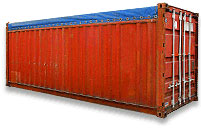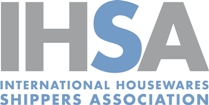Author: Jeff Bergman, International Housewares Shippers Association (IHSA)
 A recent headline on the Journal of Commerce website that read “Carriers Restoring Capacity Faster Than Demand” had many importers scratching their heads. Any person responsible for moving cargo from Asia to the United States understands that nothing could be further from the truth. In fact, demand is exceeding supply by such a large percentage that most ocean carriers have stopped soliciting new business. If you went on to read the complete article, you learned that it will be 2011 before supply is expected to exceed cargo demand.
A recent headline on the Journal of Commerce website that read “Carriers Restoring Capacity Faster Than Demand” had many importers scratching their heads. Any person responsible for moving cargo from Asia to the United States understands that nothing could be further from the truth. In fact, demand is exceeding supply by such a large percentage that most ocean carriers have stopped soliciting new business. If you went on to read the complete article, you learned that it will be 2011 before supply is expected to exceed cargo demand.
It is true that the carriers have been slowly adding capacity back in the global trade. Carriers boosted capacity in the Asia-Europe trade lane where rates change more frequently than the Asia-United States route. There are approximately 549,000 TEUs (Twenty foot Equivalent Units) of idled tonnage, which is down significantly from the peak of 1.5 million TEUs of idled tonnage in December 2009. One main reason why the impact of additional capacity is not being felt is “slow steaming”. This initiative was adopted last year to save on fuel costs and has become common practice by all major carriers. In addition to saving on fuel costs, slow steaming can also cut a carrier’s capacity. Slower ships spending more time at sea reduce supply opportunities for shippers. Some carriers have reduced capacity by up to 5 percent by implementing slow steaming.
Shippers are becoming increasingly frustrated with the inability to move their cargo at rate levels that are 50 percent to 100 percent higher than at this time last year. The Federal Maritime Commission (FMC) has opened a fact finding investigation to see if the carriers have done anything illegal to create the current market environment. Container line executives have been quick to refute any claims of collaboration between the shipping lines that resulted in higher freight rates and less capacity. Typically, these fact finding investigations can take months if not years before any penalties or judgments are levied.
What can shippers expect during the traditional heavy shipping period between July and October? More of the same frustration is the most common opinion being offered by carrier representatives. There is a very small faction that attributes the large spike in volume to nothing more than the large retailers restocking inventory. They believe this is the primary reason why the carriers have refused to redeploy more vessels and eliminate the slow steaming initiative. Regardless of the reason, carriers have decided to take a very cautious approach before adding all available capacity back in the global trade. Until they do, there will continue to be thousands of containers stranded in Asia waiting to be loaded on ships to the United States.
 Founded and endorsed by the International Housewares Association (IHA), the International Housewares Shippers Association (IHSA) helps members save on ocean freight costs through collective bargaining agreements. To learn more, contact Greg Marti at gmarti@shippersassociation.org or visit www.shippersassociation.org.
Founded and endorsed by the International Housewares Association (IHA), the International Housewares Shippers Association (IHSA) helps members save on ocean freight costs through collective bargaining agreements. To learn more, contact Greg Marti at gmarti@shippersassociation.org or visit www.shippersassociation.org.


